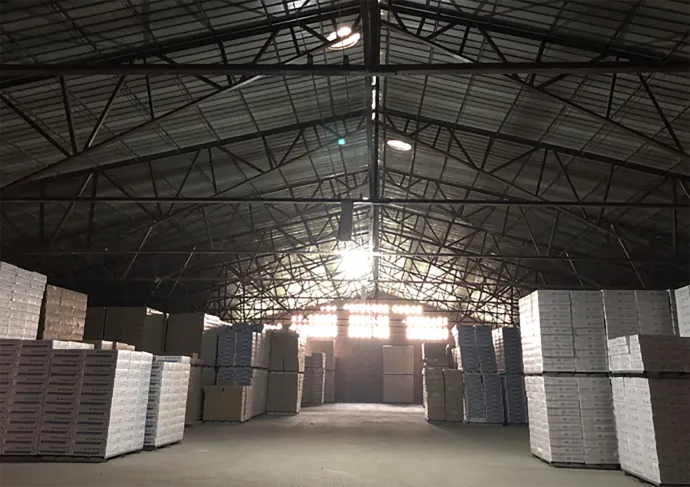Nov . 20, 2024 10:42 Back to list
drop ceiling grid materials
Exploring Drop Ceiling Grid Materials
In the realm of interior design and construction, drop ceilings, also known as suspended ceilings, have become a popular choice for both residential and commercial spaces. These ceilings consist of a grid system that supports tiles or panels, providing a multitude of benefits including aesthetic appeal, sound insulation, and ease of access to utilities. However, the choice of materials for the grid system is crucial to the overall performance and durability of a drop ceiling.
The primary materials used in drop ceiling grids include aluminum, steel, and various types of plastic. Each material offers distinct advantages and drawbacks, making it essential for builders and designers to carefully consider their options based on specific project needs.
Aluminum Grids
Aluminum is a lightweight, corrosion-resistant material that is often favored for drop ceiling grids. Its resistance to rust and environmental factors makes it an excellent choice for areas subject to moisture, such as bathrooms, kitchens, or commercial kitchens. Additionally, aluminum can be finished in a variety of ways, allowing designers to achieve different aesthetics, from sleek modern designs to more traditional looks. The inherent durability of aluminum ensures that it can withstand everyday use while maintaining its structural integrity. However, it can be more expensive than other materials, making it necessary to balance cost with benefits.
Steel Grids
drop ceiling grid materials

Steel grids are another common option for drop ceilings. Known for their strength and robustness, they are ideal for spaces that may require additional support, such as areas with heavy lighting fixtures or HVAC systems. Steel grids can be made from galvanized steel, which provides rust protection, thereby extending the lifespan of the ceiling system. While they may not offer the same aesthetic flexibility as aluminum, steel grids can be painted or finished to match the desired look of the space. However, their weight and potential for rusting in humid environments are considerations that must be addressed in design and installation.
Plastic Grids
Plastic drop ceiling grids are often overlooked but offer unique advantages, particularly in terms of cost-effectiveness and weight. These grids are lightweight and typically resistant to moisture, making them suitable for a wide range of applications. Plastic grids are also available in various colors and styles, providing options for creative design. However, they may not support as much weight as metal grids and could be less durable over time, especially in high-traffic areas or under heavy equipment.
Conclusion
Understanding the variety of drop ceiling grid materials is fundamental for anyone involved in building or remodeling projects. Each material has its specific benefits, from the lightweight and versatile aluminum to the sturdy and reliable steel, and the cost-effective plastic options. By carefully evaluating the requirements of a project, including aesthetics, functional demands, and budget, designers and builders can select the most appropriate grid material to achieve optimal results. Whether for a home, office, or commercial space, the right drop ceiling grid can enhance the overall functionality and visual appeal of the environment.
-
Quality Ceiling Trap Doors & Access Panels | Easy & Secure AccessNewsAug.30,2025
-
Durable Ceiling T Grid Systems | Easy InstallationNewsAug.29,2025
-
PVC Gypsum Ceiling: Durable, Laminated Tiles for Modern SpacesNewsAug.28,2025
-
Pvc Gypsum Ceiling Is DurableNewsAug.21,2025
-
Mineral Fiber Board Is DurableNewsAug.21,2025
-
Ceiling Tile Clip Reusable DesignNewsAug.21,2025







